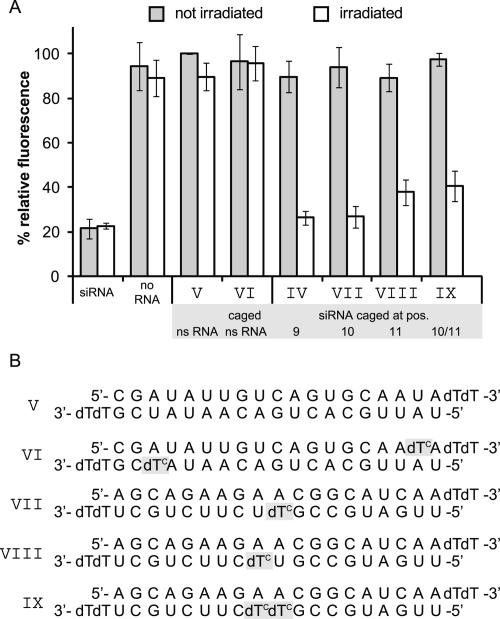FIGURE 4.
Nucleobase caging at cleavage site leads to reversible inactivation of siRNA. (A) Fluorescence intensity of HeLa cells transfected with different siRNAs with (gray bars) and without (white bars) irradiation for 40 min 4 h past transfection. As a positive control, indicating full activity, a commercially available siRNA was transfected. The various negative controls were a sample not treated with any siRNA (no RNA), a sample transfected with a nonsilencing RNA (V) whose fluorescence intensity was defined as 100%, and the same nonsilencing RNA bearing photolabile protection groups (VI). The different caged siRNA sequences (IV, VII, VIII, and IX) are all inactive within error limits. For sequences IV and VII, a reactivation that can be assumed to be complete could be achieved, while sequences VIII and IX, even after irradiation, display a residual inactivation. Fluorescence intensity of the control samples was not affected by irradiation and achieves values similar to those of the not irradiated control samples. Also, products of uncaging do not affect EGFP expression in any way, as the fluorescence intensities of VI irradiated and not irradiated are equal. (B) Sequences and caging positions of the used 21mers. The sequences V and VI are not targeting the expression of EGFP or the normalization protein RFP.

